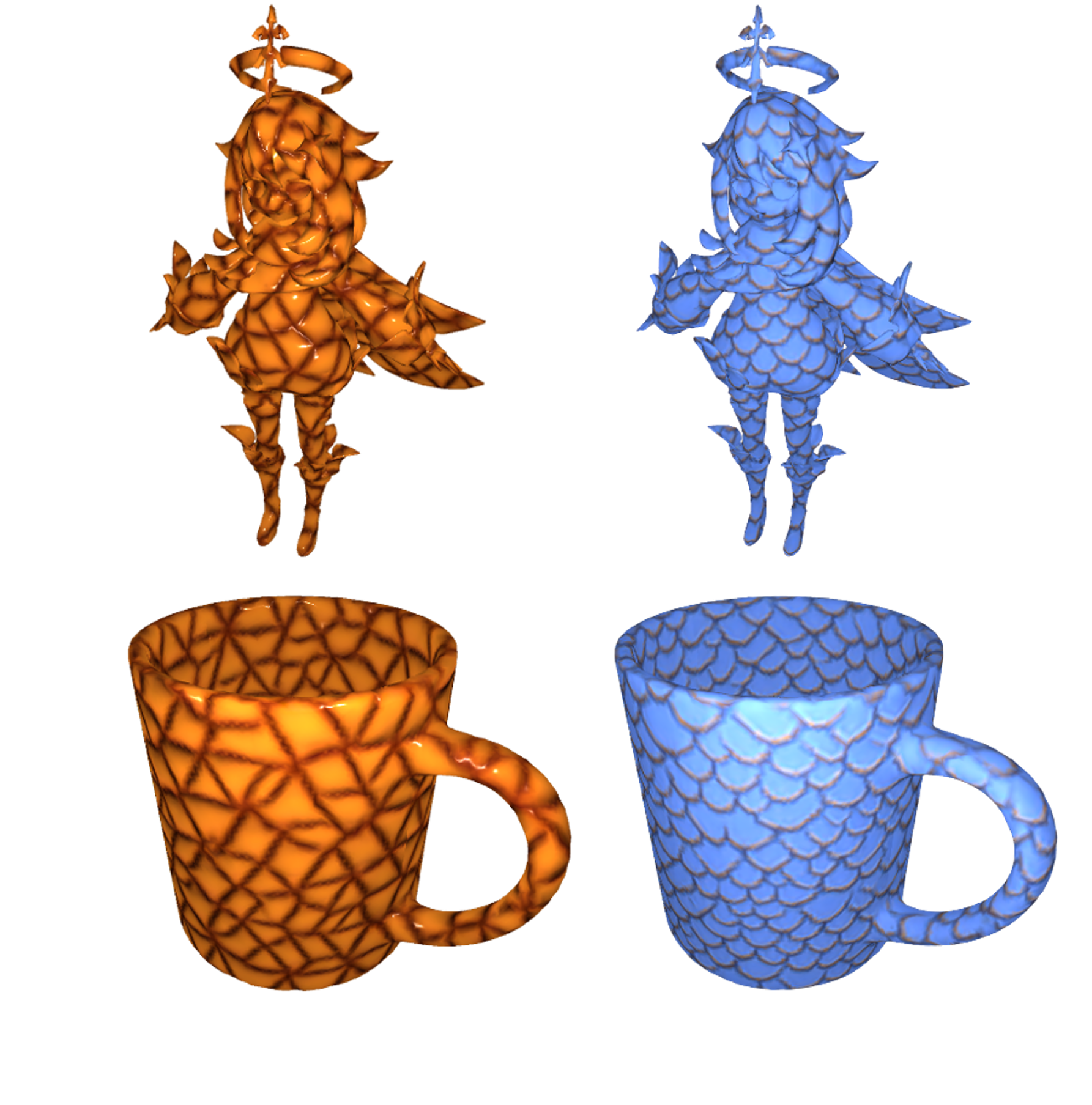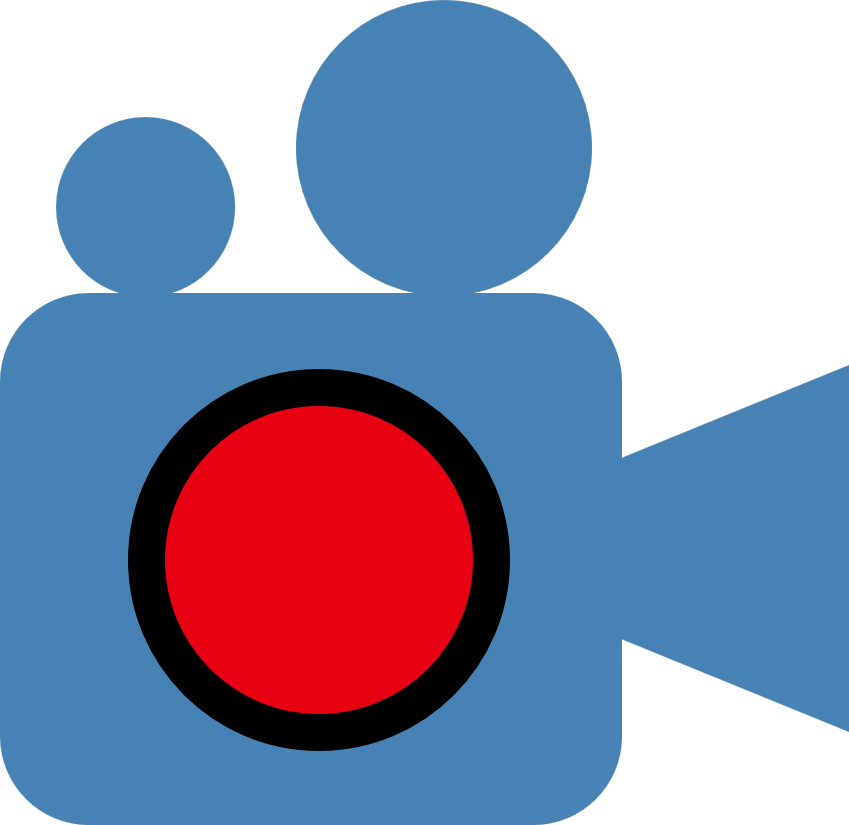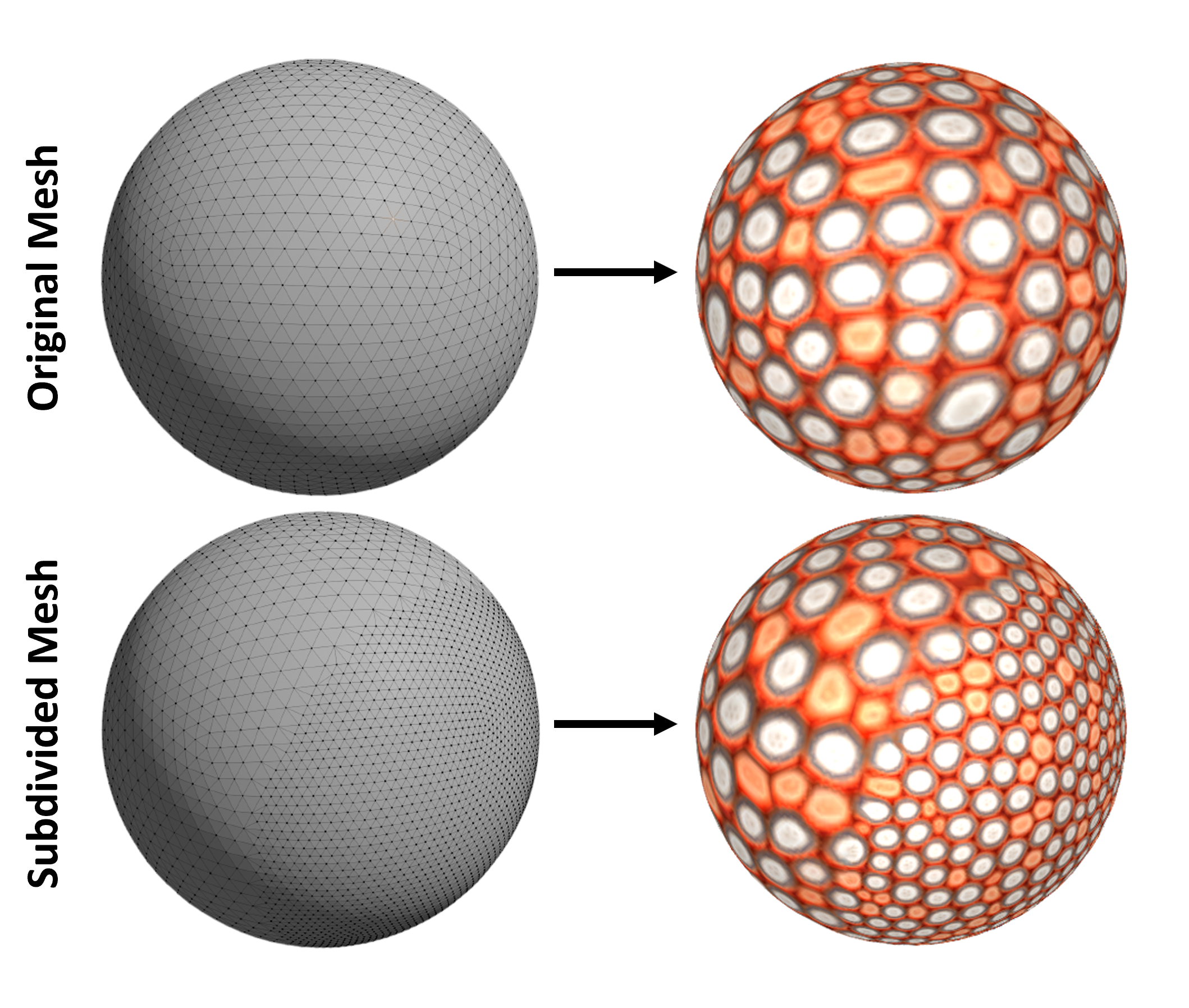Modeling and synthesizing textures are essential for enhancing the realism of
virtual
environments. Methods that directly synthesize textures in 3D offer distinct
advantages to the
UV-mapping-based methods as they can create seamless textures and align more closely
with the
ways textures form in nature. We propose Mesh Neural Cellular
Automata (MeshNCA), a method for directly synthesizing dynamic
textures on 3D
meshes without requiring any UV maps.
MeshNCA is a generalized type of cellular automata that can operate on a set of
cells arranged
on a non-grid structure such as vertices of a 3D mesh.
While only being trained on an Icosphere mesh, MeshNCA shows remarkable
generalization and can
synthesize textures on any mesh in real time after the training. Additionally, it
accommodates
multi-modal supervision and can be trained using different targets such as images,
text prompts,
and motion vector fields. Moreover, we conceptualize a way of grafting trained
MeshNCA
instances, enabling texture interpolation. Our MeshNCA model enables real-time 3D
texture
synthesis on meshes and allows several user interactions including texture
density/orientation
control, a grafting brush, and motion speed/direction control. Finally, we implement
the forward
pass of our MeshNCA model using the WebGL shading language and showcase our trained
models in an
online interactive demo which is accessible on personal computers and smartphones.




